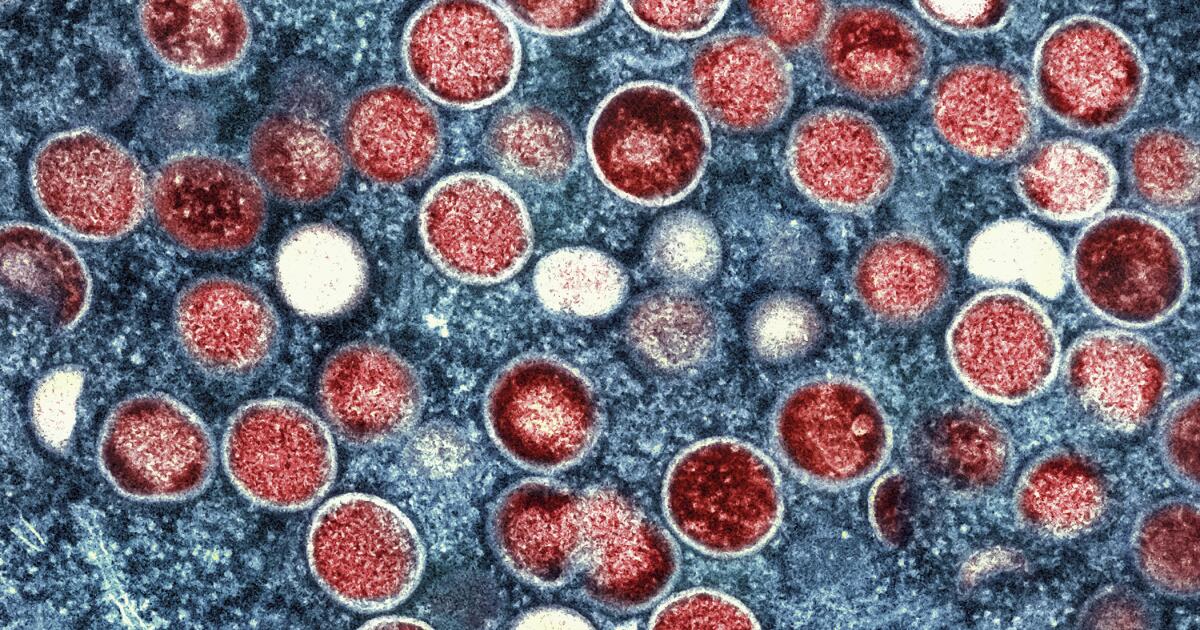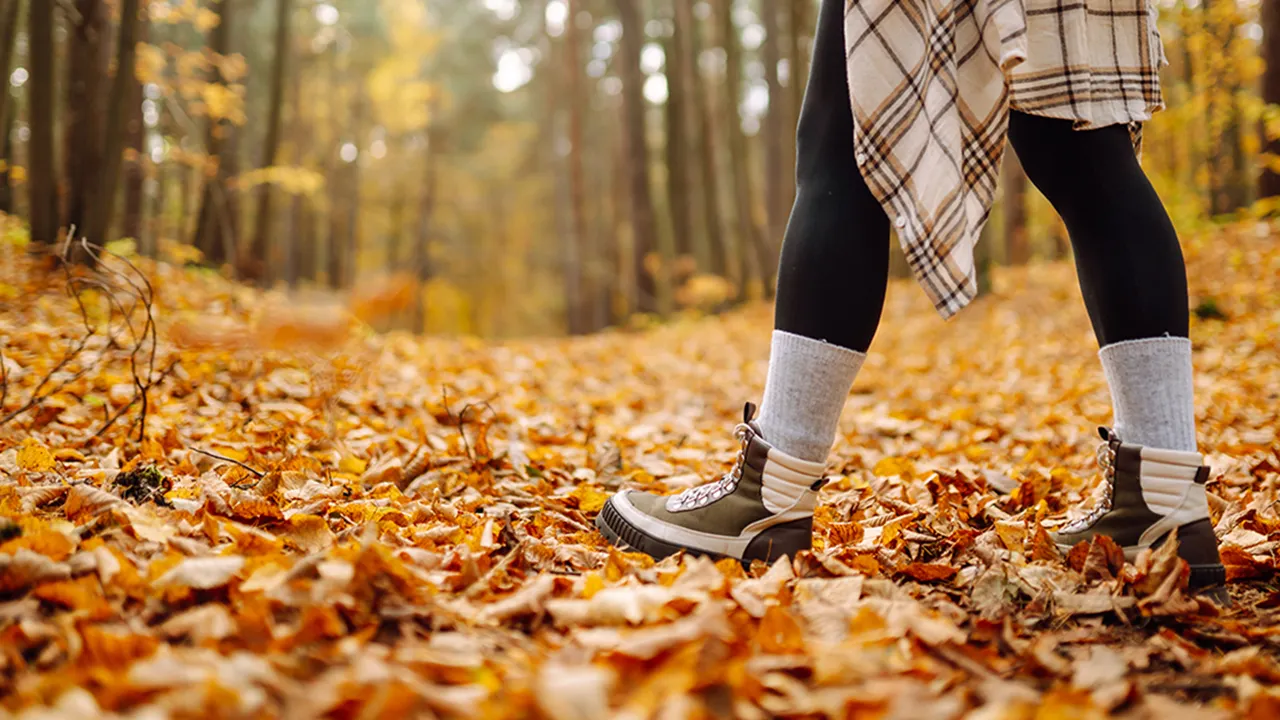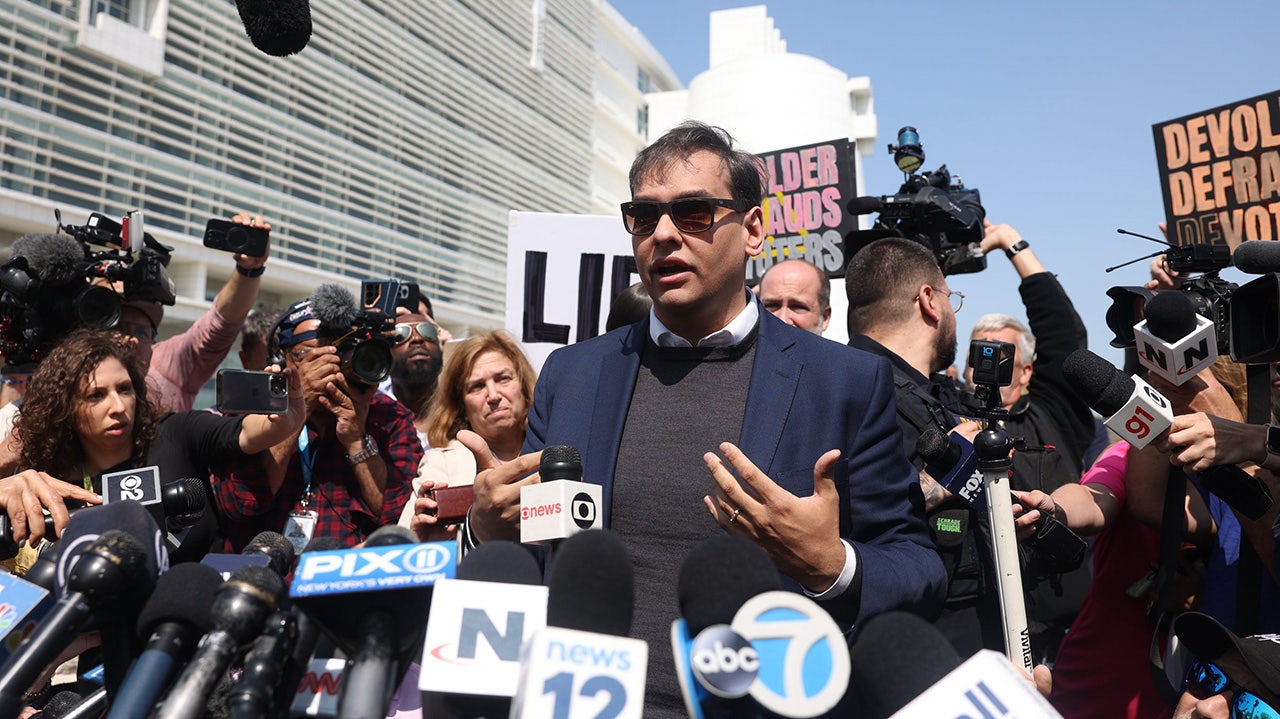Science
A potentially more severe strain of mpox may be spreading in L.A. County

A third case of a potentially more severe strain of mpox was confirmed in Los Angeles County on Friday, leading officials to investigate the possibility it is starting to spread locally.
The trio of cases, all reported publicly this week, represents the first time this particular type of mpox, known as “Clade I,” has been found in the United States among people who had no history of traveling overseas to high-risk areas.
The first case, reported publicly on Tuesday, involved a resident of Long Beach. The second and third cases, reported Thursday and Friday, occurred among other Los Angeles County residents. All three patients were hospitalized but are now recovering at home.
“At this time, no clear link has been identified between the cases,” the L.A. County Department of Public Health said.
Nonetheless, “the confirmation of a third case with no travel history raises concerns about possible local spread in Los Angeles County,” Dr. Muntu Davis, the L.A. County health officer, said in a statement. “We’re working closely with our partners to identify potential sources and understand how this potentially more serious type of the mpox virus may be spreading.”
“While the overall risk of … exposure to the public remains low, we are taking this very seriously,” Long Beach Mayor Rex Richardson said in a statement. “This underscores the importance of continued surveillance, early response and vaccination.”
This type of mpox is different from the one that spawned a global outbreak in 2022, which is known as “Clade II.”
Clade I is potentially even more concerning, however, because it may cause more severe illness and spread more easily, “including through close personal contact,” such as massage or cuddling, in addition to sex, the L.A. County Department of Public Health said.
The California Department of Public Health said last year that Clade I has historically caused more severe illness than Clade II, but added that “recent infections from Clade I mpox may not be as clinically severe as in previous outbreaks, especially when cases have access to quality medical care.”
Mpox, formerly known as monkeypox, is primarily spread through close, intimate contact, such as through body fluids, sores, shared bedding or shared clothing, as well as kissing, coughing and sneezing, health officials say.
Tell-tale symptoms “include rash or unusual sores that look like pimples or pus-filled blisters on the face, body and genitals, fever, chills, headache, muscle aches or swelling of lymph nodes,” the L.A. County Department of Public Health said. Other symptoms can include a sore throat.
“Anyone who develops an unexplained rash or lesions should avoid sex and intimate contact and seek medical evaluation as soon as possible,” the Long Beach Department of Health and Human Services said.
People should get tested if they have symptoms, officials said. Those who have symptoms should also avoid sex or close contact.
Clade II mpox generally causes mild-to-moderate illness and has been circulating at low levels throughout the United States since 2022, according to the L.A. County Department of Public Health.
There have been 118 cases of Clade II mpox reported to the L.A. County Department of Public Health so far this year.
Before this week, there had been a total of six cases of Clade I mpox in the U.S. — all among people who had recently traveled to areas where this type of mpox is circulating, namely central and eastern Africa. None of those cases was linked to each other, according to the Centers for Disease Control and Prevention.
The CDC says there have been more than 40,000 cases of Clade I mpox in central and eastern Africa.
In the Democratic Republic of the Congo, one of the countries with confirmed cases, multiple modes of Clade I mpox transmission have been documented, including “contact with infected dead or live wild animals” and “household contact often involving crowded households,” in addition to sexual contact, according to the CDC.
These countries in central and eastern Africa have reported Clade I mpox cases since 2024.
(U.S. Centers for Disease Control and Prevention)
The risk to the general U.S. population in the U.S. from Clade I mpox is considered “low,” the CDC says. The agency classifies the risk to gay and bisexual men who have sex with more than one partner as “low to moderate.”
Travel-associated cases of Clade I mpox have also been found in a number of other regions globally, including Asia, Australia, Europe and South America.
The first Clade I mpox case in the U.S. was reported 11 months ago — in someone in California who had traveled to Africa and received care in San Mateo County, according to the CDC and California Department of Public Health. That person had mild illness, the San Mateo County health department said at the time.
Most people who are infected get better within two to four weeks, the Long Beach Department of Health and Human Services said, “but antiviral treatments may be considered for individuals with or at risk of developing severe illness.”
The two-dose Jynneos vaccine is also available to help prevent the spread of mpox.
Those who only got one dose can get their second doses “no matter how long it’s been since the first dose,” the L.A. County Department of Public Health said.
Vaccines are widely available, and can be found at pharmacies such as Walgreens and CVS. People can look up locations to get vaccinated through the vaccine’s manufacturer, Bavarian Nordic. The L.A. County Department of Public Health also maintains a list of vaccination sites.
The vaccine is available to people at higher risk for the illness, including those who were exposed to an infected individual over the last two weeks.
Also eligible for vaccination are gay and bisexual people and other men who have sex with men; transgender, nonbinary or gender-diverse people; people with HIV; people who are eligible or are taking medicine to prevent getting HIV from sex or injection drug use; people traveling to sub-Saharan Africa or areas with Clade I mpox outbreaks; people who plan to attend a commercial sex event or venue, such as a sex club or bathhouse; people who have a sex partner at higher risk for getting infected; and anyone else who requests mpox vaccination.
Officials recommend people with occupational risks for infection, such as certain lab workers, also get vaccinated.

Science
A new LACMA exhibit uses art and science to unlock hidden histories

Tavares Strachan loves to blur the lines that separate art, science and historical reckoning — as well as past, present and future.
A native of Nassau, Bahamas, he once carved out a 4.5-ton block of ice in the Alaskan Arctic, had it FedEx’ed to the island nation and displayed it in a solar-powered freezer — an extreme commentary on climate change, displacement and interconnectedness.
Strachan became the first Bahamian to visit the North Pole to understand the harsh conditions that in 1909 greeted Matthew Henson — the Black explorer who accompanied Cmdr. Robert Peary on polar expeditions and was likely the first human to ever stand on top of the world. His feat went unacknowledged for years because he was Black.
This piece from Tavares Strachan’s “Inner Elder” series depicts a crowned Nina Simone as the Queen of Sheba.
(Allen J. Schaben / Los Angeles Times)
In another project, Strachan honored America’s first Black astronaut, Robert Henry Lawrence Jr. He died in a plane crash while training a test pilot in 1968 before he could take part in any space mission. So Strachan sent a replica of an artwork inspired by Lawrence into orbit on a SpaceX rocket.
Now a collection of Strachan’s work is on view at the Los Angeles County Museum of Art for his first museum show in the city, titled “The Day Tomorrow Began.”
The multisensory exhibition showcases Strachan’s ability to translate his lifelong passion for scientific inquiry and boundary-pushing adventures into pieces that make you question everything you thought you understood about human progress — all while forcing you to see how Black achievements so easily get written out of the history books.
“The pieces of this particular exhibition that I think may hit people are when they start making connections on their own — the synapses start to fire,” the 45-year-old artist said during a recent tour of his show. “You start to tie in, for example, the relationships between this polar explorer Matthew Henson and Robert Henry Lawrence. And then you start to think about the earlier explorers who left the African continent and this pioneering spirit that is a part of what it means to be African that is oftentimes not articulated or discussed.”
On view until March 29, “The Day Tomorrow Begins” is both whimsical and serious. There is a lot to take in: illustrations and diagrams, displays of traditional African hairstyles, mohair collages made jointly with South African weavers, commemorative ceramics, a field of rice grass whose strawlike scent is meant to pique olfactory memories.
A glassmaker, Strachan covers a wall with two neon signs that spell out quotes by James Baldwin, whose words appear upright, and Mark Twain, whose words appear upside down — in a nod both to the wonders of chemistry and the power of the pen to dissect issues of identity.
In another soaring room, dramatic bronze sculptures flip the script on the triumphs of Western civilization — placing the focus on the oppressed.
One piece depicts the moon, its surface pockmarked by craters. Resting on its north pole is a bust of Henson. Protruding from the moon’s south pole is an upside down bust of Peary.
Fitting for an artist who once put himself through the physical rigors of cosmonaut training, the show feels like a dialogue between opposing forces — boundlessness and constraint, presence and absence.
Strachan, who lives in New York, said his fascination with science and its hidden histories started while growing up as a curious and “very stubborn” kid in Nassau.
He was about 12 when his family bought the first set of encyclopedias that he can remember. But something was off: few entries featured notable figures who looked like him.

Tavares Strachan’s show at LACMA includes a room of whimsical ceramic sculptures from his “Inner Elder” series that are positioned in a field of fragrant rice grass.
(Allen J. Schaben / Los Angeles Times)
“I think this was my first peek into social science,” Strachan said. “Obviously, you can’t collect all of this material without making decisions — you’re deciding what’s seen and what’s unseen. It started to get me going on these questions of visibility and invisibility.”
Strachan started to ponder his place in the ecosystem — and the universe beyond.
Tired of wearing the clothes that his seamstress mother made for him, Strachan raised money for shopping by working on a fishing boat, spending weeks at a time at sea.
At night, far from shore, more stars flickered than he’d ever noticed, and he was awestruck by the way phosphorescent creatures set the waves aglow.
Strachan learned to navigate by tracking the movements of celestial bodies and hunt fish by reading the currents, building on the ancient knowledge his elders handed down.
Up until then, his 700-island archipelago had felt like the center of the world. Now his curiosity was a universe of possibilities.
But while his mind raced across the heavens, Strachan couldn’t stop thinking about the voids that made written accounts of pioneering feats and extraordinary voyages on Earth seem incomplete.
Charles Darwin is a household name, but how many people know that the world’s most famous naturalist learned taxidermy from John Edmonstone, a formerly enslaved Black Briton who owned a bird-stuffing shop in Edinburgh, Scotland?
Strachan was in his 20s when he stumbled upon Henson’s achievement.
“Science — that’s the place where knowledge is produced, and meaning,” exhibition curator Diana Nawi said. “How do we know what we know? I think that’s fundamentally what [Strachan]’s asking.”
Nawi said Strachan’s projects resist the “calcification of history,” which she describes as the process in which a dominant group reinforces narratives that glorify themselves while ignoring or actively erasing the contributions of others.
“Histories are tools of power,” Nawi said. “How do you take that power for different people and different ideas, but also, how do you undo the singular concept of that power?”

In Tavares Strachan’s LACMA show, stories of racial uplift and groundbreaking achievements take center stage. This illuminated piece uses glass, argon and electrodes to evoke the spirit of America’s first Black astronaut, Robert Henry Lawrence Jr., who died in a plane crash before he could take part in a space mission.
(Allen J. Schaben / Los Angeles Times)
“In 2020 … it was the toppling of monuments, for instance,” Nawi said, referring to the decommissioning of statues that celebrate the Confederacy in the wake of George Floyd’s murder.
“History is ripe for the retelling and the retaking,” Nawi said.
That sentiment has many meanings in the current moment.
Some of those removed monuments have been transformed into new artworks that will be on view in the show “Monuments,” at MOCA Geffen and the Brick from Oct. 23 to May 3. At the same time, the Trump administration has attacked public displays of factual but less-flattering aspects of U.S. history as too “woke.”
Strachan’s work also suggests there is power in acts of poetic justice.
Inside one darkened room in the show, a life-size, glass “portrait” of the astronaut Lawrence appears to be levitating as if free from gravitational forces. His frame is lit from within, head-to-toe, by argon trapped in electrified tubes shaped to resemble the human circulatory system, making his soul visible.
America’s first Black astronaut never got to transcend Earth’s atmosphere.

Tavares Strachan poses with his installation “Six Thousand Years,” which is made up of 2,000 panels from his “Encyclopedia of Invisibility.” The leather-bound tome contains 17,000 entries that the artist wrote to bring attention to little-known facts and Black trailblazers.
(Allen J. Schaben / Los Angeles Times)
By fashioning this portrait of Lawrence to capture his spirit, and by shooting a satellite honoring Lawrence into orbit, Strachan wanted to metaphorically help him achieve that goal.
“For me it’s important to ensure that when someone has done something incredible, that the level of storytelling is aligned with the nature of the act, hence the audacity of putting an object into space and trying to get his energy back into the cosmos,” Strachan said.
“But also, it’s about having a 10-year-old walk in and be just amazed by the technical feat of creating this glass object.”
Science
L.A. County gets a new tool to find and save vulnerable people with cognitive disabilities

Janet Rivera cares for both her 79-year-old mother, who has dementia, and her 25-year-old son, who has a genetic condition called Fragile X syndrome. Despite their differing diagnoses, both of her loved ones share a common symptom: They are prone to wander away from home, and have cognitive impairments that make it hard to find their way back.
When she came across L.A. Found, a county program that distributes free technology to help locate vulnerable people with cognitive disabilities, it felt like a lifeline.
The county gave her son and mother each a free wristband that emits a radio signal every few seconds. Were either of them to go missing, Rivera would call the L.A. County Sheriff’s Department, which would switch on its monitoring system and track the signal from the missing person’s device.
She feels that the trackers preserve her loved ones’ freedom and independence, while reducing her fears that they could be hurt if she couldn’t immediately find them.
“You don’t know how much this helps us with our stress as a caregiver, for our peace of mind,” she told an audience assembled Wednesday in downtown L.A.’s Gloria Molina Grand Park.
The event marked seven years of the L.A. Found program, and the addition of a new technology tool in the program’s arsenal.
Enrollees can now choose between two wearable devices: a radio transmitter wristband supported by the nonprofit Project Lifesaver, or a GPS-enabled smartwatch from technology company Theora Care that can be paired with an app on a caregiver’s phone.
Jordan Wall, who is autistic, shows off her GPS watch Oct. 15, 2025, in Gloria Molina Grand Park in Los Angeles.
(Allen J. Schaben/Los Angeles Times)
The program, which also offers in-home safety training and other resources for families, grew out of Manhattan Beach resident Kirk Moody’s efforts to locate his wife, Nancy Paulikas, who went missing Oct. 15, 2016, while the couple was visiting the Los Angeles County Museum of Art.
While Moody and family members searched the museum grounds, security cameras captured Paulikas — who had early-onset Alzheimer’s disease — walking away down Wilshire Boulevard. He received a call in December 2018 that remains discovered in a Sherman Oaks park were hers.
During his two-year search, Moody and the nonprofit Alzheimer’s Los Angeles began working with Supervisor Janice Hahn and others on an initiative that became L.A. Found.
The service is available to any L.A. County resident with a diagnosis of dementia, autism or other cognitive disability that puts them at higher risk of wandering.
More than 1,800 people have since received a tracking device through the program, and 29 have been successfully located after going missing.
“No one has to go through this anguish and hopelessness and fear,” Moody said Wednesday on the ninth anniversary of his wife’s disappearance.
Wandering is a common symptom of dementia and autism, though for different reasons.
The brain degeneration associated with Alzheimer’s disease typically starts in the entorhinal cortex, which helps track our position as we move through space, and then moves on to the hippocampus, which helps us understand where things are in relation to us.
As the disease advances, it becomes increasingly difficult for people to mentally track their own location, and recall where they intend to go or how to get back home.
Autistic people may wander away from home or a caregiver to follow something that’s captured their attention, or to escape uncomfortable sensory stimuli such as noises or bright lights.
Studies have found that up to 60% of people with dementia, and 25% to 50% of autistic people, will wander or bolt at some point. These episodes can result in injury or death. For reasons that aren’t entirely clear, autistic children in particular are often drawn to bodies of water while lost. An average of seven autistic children in the U.S. drown every month after going missing, according to the National Autism Assn.
Most challenging for families is that many at-risk people can successfully bypass complicated systems of locks and security sensors, even while lacking the verbal or cognitive abilities to seek help once they are lost.
People have slipped away while surrounded by attentive caregivers, and even when families have taken extensive measures to ensure their safety.
Kate Movius has studied wandering extensively and trains first responders on supporting autistic people. She equipped her Highland Park home with a slew of locks and security sensors to protect her autistic son. Nevertheless, by the time she acquired a Project Lifesaver wristband for Aidan, who is now 25, he had gone missing several times.
“If it can happen to me, it can happen to anyone,” Movius said. “You’re putting out so many fires as a caregiver, and [wandering] is not going to occur to you until you’re living it.”
If you or someone you know could benefit from L.A. Found’s free services, contact the program at (833) 569-7651, lafound@ad.lacounty.gov or ad.lacounty.gov/lafound.
Science
Three more L.A. County deaths tied to synthetic kratom, health department warns

Three more deaths in Los Angeles County have been linked to kratom, a compound that is being synthetically reproduced and sold over the counter as a cure-all for a host of ailments, the county Department of Public Health announced on Friday.
The compound, also known as 7-Hydroxymitragynine, or 7-OH, was found to be a contributing cause of death in three residents who were between the ages of 18 and 40, according to the county health department.
That brings the total number of recent overdose deaths related to kratom in L.A. County to six. The first three deaths were identified in September. Alcohol was also found in all six individuals.
“It’s critical that the community understand that these products are dangerous and can result in fatal overdoses,” said Gary Tsai, director of the Los Angeles County Department of Public Health’s Substance Abuse Prevention and Control Bureau. “The safest thing to do is avoid using 7-OH and kratom-related products altogether.”
In addition, Tsai said, to reverse an opioid overdose, the best approach is to administer naloxone.
Kratom is an herbal extract derived from the leaves of Mitragyna speciosa, a tree native to Southeast Asia, and is commonly sold as a powder or pill — sometimes based on its natural form, and sometimes based on a synthetic version. Recently, U.S. purveyors have been selling more and more products with potentially dangerously concentrated amounts of 7-OH, according to a July report from the Food and Drug Administration.
Researchers say there are people in the United States who use kratom to alleviate anxiety and chronic pain or as a remedy for the symptoms associated with quitting opioids. But despite its use for pain relief, public health officials have raised concerns about the potential for 7-OH abuse because of its ability to bind to opioid receptors in the body.
“Retailers should immediately stop selling any 7-OH products, as these are not lawfully marketed in the U.S. as a drug product, dietary supplement, or food additive,” L.A. County’s public health department said on Friday.
The synthetic product comes in various forms such as tablets, gummies, drink mixes, and concentrated liquid extracts or shots for drinking. When mixed with alcohol and certain drugs, 7-OH can cause severe respiratory depression, when breathing becomes too slow, which in worse-case scenarios can lead to death.
According to warning letters sent by the U.S. Food and Drug Administration to firms marketing kratom-related products, 7-OH has not been approved by the FDA and is not permitted to be marketed or sold as a drug or additive to food or drinks.
In the absence of regulation at the state level, some communities in California have taken it upon themselves to act. Orange County and the cities of Newport Beach, San Diego and Oceanside have all prohibited the sale, distribution or possession of kratom.
-

 Augusta, GA1 week ago
Augusta, GA1 week ago‘Boom! Blew up right there’: Train slams into semi in Grovetown
-

 Alaska4 days ago
Alaska4 days agoMore than 1,400 seeking shelter as hundreds wait to be evacuated after catastrophic Western Alaska storm, officials say
-

 Education1 week ago
Education1 week agoVideo: 3 Former College Teammates Reunite on Rangers Coaching Staff
-
Business1 week ago
Los Angeles Times Media Group takes step to go public
-

 Wisconsin1 week ago
Wisconsin1 week agoAppleton Public Library wins 2025 Wisconsin Library of the Year award for distinguished service
-

 Vermont1 week ago
Vermont1 week agoFeds: Springfield dealer ran his drug business from Vermont jail
-
Virginia1 week ago
Match 13 Preview: #8 Virginia
-

 News1 week ago
News1 week agoWhat we know about the charges against New York’s Attorney General Letitia James















